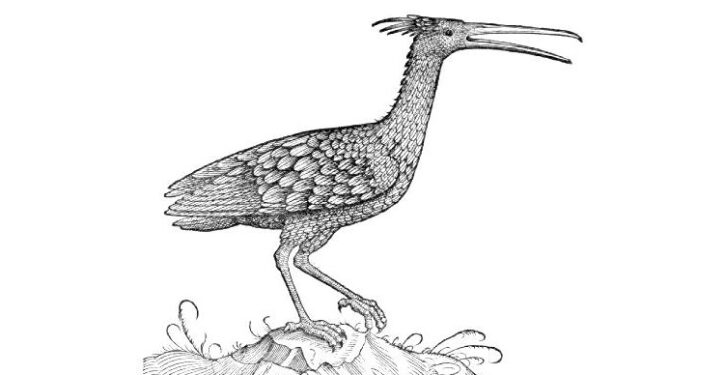
A bird species that went extinct in Europe has made a comeback there after scientists and conservationists taught young birds the correct migration route. “The distinctive northern bald ibis, hunted essentially to extinction by the 17th century, was revived by breeding and rewilding efforts over the last two decades. But the birds — known for their distinctive black-and-iridescent green plumage, bald red head and long curved beak — don’t instinctively know which direction to fly to migrate without the guidance of wild-born elders. So a team of scientists and conservationists stepped in as foster parents and flight instructors…To prepare them for travel, the chicks are removed from their breeding colonies when they are just a few days old. They are taken to an aviary that’s overseen by the foster parents in the hopes of ‘imprinting’ — when the birds will bond with those humans to ultimately trust them along the migration route.” To teach them the correct migration route, “Steininger and the other foster parents then sit on the back of a microlight aircraft, waving and shouting encouragement through a bullhorn as it flies through the air,” reports The Associated Press.
The northern bald ibis used to be found in much of Europe, as well as North Africa and the Arabian Peninsula. But these migratory birds were “considered a delicacy, and the bird, known as the Waldrapp in German, disappeared from Europe, though a few colonies elsewhere survived.”
Northern bald ibises have an inborn urge to migrate, but they don’t know which direction to fly without guidance from others, such as older northern bald ibises that have experience migrating. A scientific team’s earlier efforts to reintroduce the ibises to Europe were largely unsuccessful because they did not teach the birds the migration route. As a result, most of the birds released disappeared after flying off in the wrong direction. “Instead of returning to suitable wintering grounds such as Tuscany, Italy, they flew in different directions and ultimately died.”
Other animals are also making a comeback. Sturgeons recently returned to Sweden, a century after they disappeared from Swedish waters. In Spain, the Iberian lynx is no longer an endangered species.
In 2023, a baby beaver was born in London, the first beaver birth there in 400 years. And carnivorous plants were reintroduced to English wetlands.
Wild horses recently returned to Kazakhstan after an absence of 200 years. These are genuine wild horses, unlike mustangs, which are domesticated horses that went wild. By contrast, domesticated horses are descended from the wild horses in Kazakhstan, since the grassy plains of northern Kazakhstan were the first place on earth where horses were domesticated.
Florida’s manatees have rebounded to their highest number in years. Sea turtles are proliferating, with sea turtle nests tripling in Florida.
An Asian antelope declared extinct in Bangladesh is making a comeback.
The forests that provide the habitat for many endangered species are also making a comeback in much of the world. The amount of vegetation on the Earth has increased every year for the past 30 years. Most of the world’s forests are growing.



